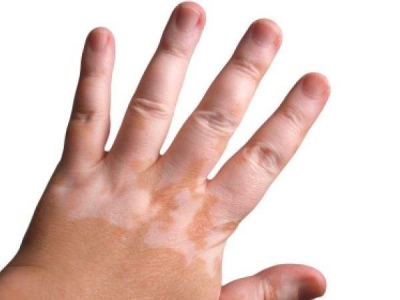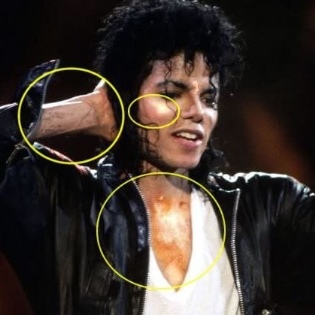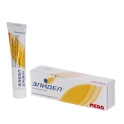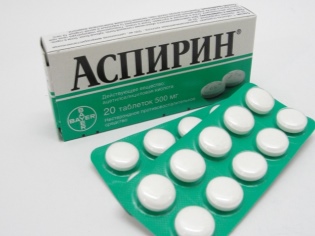Vitiligo in children
One of the most mysterious diseases that children can suffer is vitiligo. About him, humanity knows a very long time, but so far the disease belongs to the category of poorly studied, and therefore mysterious. What is vitiligo, what to do with this pathology, you will learn by reading this article.
About the disease
In the old days, vitiligo was called “dog”, thus comparing the sick with dogs. In the guise of a child with vitiligo nothing from the four-legged is not. Is that on the skin appear light spots that are very conditionally can resemble the spots of animals.
Vitiligo is a skin disease in which light melanin-free spots appear on the skin. They can grow in size, unite, "creep away". The nature of the disease is shrouded in mystery, although medics have some assumptions. Ailment is always chronic.
If hair grows on the affected area, then it also tends to become discolored, becoming milky-white. Most often, bright spots appear on the hands, knees and elbows. Perhaps this is the most traumatic parts of the human body. However, any area of the skin can be completely affected.
Some spots may disappear, others may appear in another place. Sometimes the symptoms for a while leave the person completely, and then return.
They knew about a strange disease, which does not cause any trouble (besides aesthetic), as far back as in Ancient Egypt. In the Middle Ages, this was considered a sign of witchcraft, and a little later in Europe, physicians even had to prove empirically that vitiligo was not a leprosy, and patients with white spots should not be isolated from those around them, because they do not pose a danger.
An interesting fact: the legend of pop music Michael Jackson suffered vitiligo all his life, because of this, his skin was rapidly becoming discolored. His son inherited this feature of the body.
The currently popular model Winnie Harlow is also sick with this disease.
Vitiligo in varying degrees, approximately 8% of all people on Earth, regardless of age, gender and race. However, the first half of life accounts for more than half of all cases. A quarter of the cases are children. And the disease may manifest itself in newborns, infants and adolescents.
This disease is quite common, but doctors are still studying the disease, but inevitably face the problem of understanding the processes of insufficient synthesis of melanin in the body. They know a lot about synthesis, but here's the reasons why the well-functioning work of melanocytes (specific skin cells) fails, we can only guess. While nature is not going to open this secret.
Symptoms and signs
There is only one symptom of vitiligo - light patches on the skin. At first they are small, at the initial stage they differ only by a half tone from the main skin color. Over time, the spots become white, grow, acquire quite clearly defined boundaries.
Whitening always begins imperceptibly, gradually, sometimes from the so-called pink vitiligo - the appearance of pink spots, which then also necessarily brighten.
Sometimes white spots are arranged symmetrically - on two hands or on two parts of the back. However, symmetry cannot be considered a regularity, since quite a few cases of the appearance of single bleached fragments.
Spots do not itch, do not hurt, do not itch, do not inflame and do not affect the child’s condition, development or ability at all.They deliver only psychological discomfort - and only to those children whose white fragments are located in a prominent place (for example, on the face).
Causes
As already mentioned, the causes of vitiligo are practically not studied, none of the theories have convincing scientific evidence. First of all it concerns the hereditary factor. Congenital vitiligo as a diagnosis is absent in all medical encyclopedias, since scientific minds still dispute whether depigmentation is transmitted from father to son and beyond.
Many physicians are inclined to believe that only a certain immune code, a relative predisposition, and not the disease itself is genetically transmitted.
Of the most likely reasons, it is customary to indicate:
- severe stressful situations, severe emotional upheavals (it is not entirely clear how to apply this reason to newborns and infants);
- friction of a certain skin area, and permanent and quite long;
- excessive dose of solar radiation;
- skin contact with chemicals, poisons, phenols;
- skin contact with synthetic fabrics.
The connection between discolored skin spots and diseases of internal organs (for example, the thyroid gland, liver, intestines) today has no scientific evidence. The number of people with vitiligo and diseases is approximately equal to the number of people with only vitiligo and without other pathologies.
It is because of the lack of information that it is not very difficult for doctors to make a diagnosis, but it is not easy to give at least some predictions, to understand whether vitiligo will be stable or progressive, how much of the skin will discolor the disease.
When diagnosing, the doctor will definitely need to rule out other causes of lightening of the skin - leukopathy, syphilitic leucoderma, parapsoriasis, congenital albinism. This can be done by visual inspection (by lighting a fragment of the skin with an ultraviolet lamp), as well as some laboratory tests of blood and scraping of epithelial cells.
Treatment
In this matter, the opinions of doctors again differ. Effective and unambiguous treatment of white skin spots today does not exist. However, in medicine there is a certain standard scheme that the doctor will prescribe to the child after the child has been diagnosed.
Some specific drugs, ointments or techniques, no one will advise, because they are not in nature. However, a certain integrated approach to therapy that has developed over many decades, sometimes shows quite good results - the spots diminish, some return to normal color.
Children after 12 years old are prescribed PUVA therapy. This is a combination of ultraviolet radiation in a long spectrum with the simultaneous use of photosensitizers - drugs that improve the susceptibility of the skin to ultraviolet rays. Apply "Meloxin", "Meladinin", "Trioxaralen". Pigment (not fully, but only 60-70%) appears on the white skin areas after more than 200 such sessions, not earlier.
Light therapy is also prescribed for younger children, but no longer by long waves of UV rays, but by waves in the middle range, using corticosteroids "Prednisolone». Children after the year often prescribe ointment "Elidel».
As part of systemic therapy, the doctor will definitely consider the possibility of prescribing immunomodulators, agents that affect the normalization of liver function, some digestive enzymes (just in case). Vitamins are prescribed - B6, B12, B1, C, E, as well as zinc and copper preparations. Since medicine is trying to deliver a healing "blow" for all possible (though not proven) causes of the disease.
You can try to get rid of vitiligo and surgically. During a small manipulation, doctors will try to make a replant in the bleached epidermis of the active melanocyte cells. The results are not always, but you can try.
Tips
Children with vitiligo should not stay too long in the open sun, because the bright spots on their skin burn much faster, the skin in this place can then thicken.
A child’s food must necessarily include foods with a very high content of vitamins B, C, E. These include figs, parsley, buckwheat porridge, celery, rosehip, beef, cheese, peas and shrimp.
On the Internet, parents who really want to quickly rid the child of discolored skin fragments can find information about a supposedly effective recipe based on making children's cream with aspirin (for applying to the affected areas).
Please note that aspirin is proposed to dissolve in vinegar, and then - applied to the skin. This method is definitely not suitable for kids! Acid can cause chemical burns, severe allergic reactions. It is not worth the risk, because the effectiveness of acetylsalicylic acid (aspirin) in vitiligo has not been proven by any doctor, has not been substantiated, and has never even been recorded. Vitiligo is not a contagious disease, it is safe for others.
You will learn more about vitiligo disease in the next video.





























